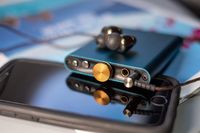Apple says that people enjoy Spatial Audio so much that they’re listening more. The company continues to try to give them songs to listen to as well, quadrupling the number of Spatial Audio songs available on Apple Music since September.
According to a Billboard report, the majority of Apple Music listeners have Spatial Audio for a spin with the number of listeners increasing 50% since September. The number of Spatial Audio-enabled songs in the Apple Music charts also highlights how popular the feature is, according to the report.
While it may not have changed the music industry yet, the growth of Spatial Audio is reflected in Apple Music’s charts. Since the beginning of the year, 37% of the top 10 songs on Apple Music’s global Daily Top 100 songs chart are available in Spatial Audio and 42% of the platform’s top 100 songs in the U.S. today are available in Spatial Audio. Additionally, 40% of the biggest new releases on Apple Music since September have been available in Spatial Audio, according to the streaming service.
The offering of Spatial Audio has been enough to help Apple Music set itself apart from the competition, something that’s vital considering the fact everyone has the same catalog of songs that they can offer to music fans.
Apple Music launched Spatial Audio last year and has since been trying to get everyone on board — and not just listeners.
“This is the biggest priority in what we do because we believe in it, because we think this is better for the customer and is better for the creative industry,” says Oliver Schusser, Apple’s vp of Apple Music and Beats. Schusser says Apple Music only had a few thousand songs available in Spatial Audio when it launched the feature last year, and the company went on a journey to sell artists and producers — along with listeners — on the new immersive experience.
On the subject of lossless audio, Apple also says that while many in the music industry focus on it, Apple Music needed something that was more mainstream. And Spatial Audio was the answer.
Schusser says most people can’t tell the difference when Lossless music is played and noted that while it’s an important feature to a select niche, it isn’t a mass-market product. “And so,” he says, “we went out and said we would like to have a feature for the mass market that works on pretty much every device and where people notice a difference.”
The lengthy Deadline report is well worth reading if you’re at all interested in Spatial Audio and how Apple believes it’s changing the world of streaming music.

What are the best DACs for iPhone and iPad?
In order to listen to Hi-Resolution Apple Lossless music, you will need a digital to analog converter (DAC). Let’s find out which DAC’s are the best for your iPhone or IPad.
Source link



